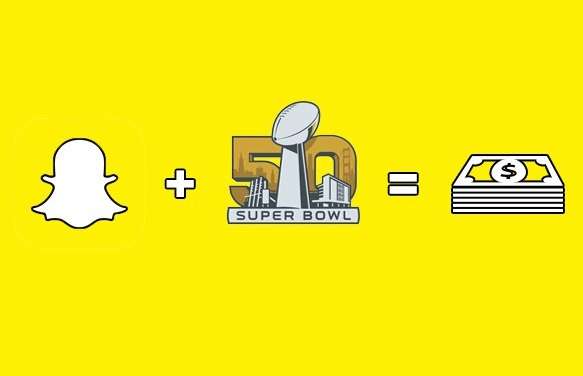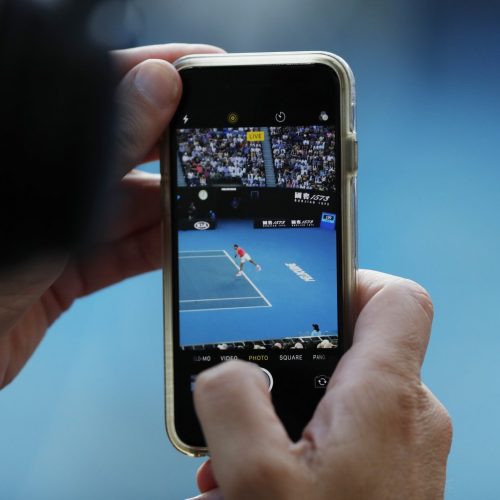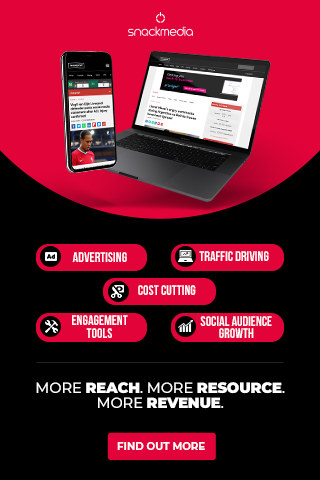Why Snapchat needs more than sports partnerships to grow
Over the past 12 months but in particularly the last 6, Snapchat has taken the world by storm. It’s easy-to-navigate interface combined with a ‘pick-up and use’ element has appealed greatly to younger generations.
And while it’s ‘new kid on the block’ status is still valid, its unquestionable ability to target the younger audiences has seen it rank among the likes of Facebook and Twitter – not bad for a platform that’s just over four years old.
As it is such a new platform, it’s performance has been quite staggering as its particularly concentrated on the popular sports arena, forming a relationship with real-time social video experts Grabyo as well as signing deals with football giant Real Madrid as well as the NFL, all in the last six months.
But, as the platform continues enjoying a purple patch which doesn’t show sign of slowing up, it’s fluidity as a platform in terms of how easy it is to use and how little there is to it could actually inhibit Snapchat’s ability to evolve.
Sports Companion
Until a few months ago, Snapchat’s real-time live feature has stood alone, offering sports fans unique insights into sports events whether or not they were at the match. From providing snippets of the atmosphere in the stands to outside the ground and even behind the scenes, Snapchat offered users a different perspective of their favourite sports events.
However, the jig is now up for Snapchat as the idea behind their ‘Live Story’ mode and being a social media companion for sports fans has permeated the strategies for bigger and more established social media platforms.
With the help of Snapchat, platforms have discovered the secret to being a sports social media companion. The ramifications of this has seen the emergence of Twitter Moments and Facebook’s recently announced Sports Stadium.
Add the fact that countless sporting brands are currently working on facilitating interaction between sports fans and teams through their own digital platforms (ie; AS Roma, Liverpool) and Snapchat may fast find that its ‘Live Story’ feature is drowned out by more prominent platforms with a more embedded, wider and loyal audience.
Expanded market
Snapchat has risen on the back of its appeal to younger generations and while that is a stepping stone to reaching audiences that use more ‘traditional social media platforms’, Snapchat needs to find a way to widen it’s appeal.
Just as it looked to stutter throughout early periods of 2015, the skins feature was introduced which was successful in hooking the ones already using Snapchat as well as appealing to the younger generations who weren’t yet using it. However, that was after a period of time which saw Snapchat become a one-trick pony.
In reality, Snapchat needs to build on its foundation because appealing to older generations via its popularity with younger ones isn’t a sustainable practice, just ask Twitter who found that out in the second quarter of 2015 (attracting just 203 million users – one of the smallest percentage increases of its history).
The problem facing Snapchat is that older audiences, virtually by definition, are harder to attract as gimmick features like new skins just don’t seem to work.
Extrapolating that to its wider problem, Snapchat’s foundation of sharing images is just not as appealing whereby Facebook bases itself on it’s core networking feature and builds upward.
Ads Ads Ads
You don’t have to be a mogul in the media world to understand that fact that advertising is huge on social media platforms. Take Facebook as an example with a total revenue of US$5.841 billion at the end of 2015 – an impressive number in its own right. But that figure takes a different meaning when you consider that 96% (US$5.63 billion) of that total revenue came in ads!
With Snapchat still an emerging platform when it comes to advertising despite teaming up with brands for the upcoming Super Bowl, it’s infancy means that it can’t demonstrate proven experience in creating ad revenue. Furthermore, it’s inability to measure ad performance means that brands won’t exactly warm to it as a advertising platform (though this is most likely to change in the coming months).
Predicting what’s ahead for Snapchat is black magic not yet available to us at Digital Sport, especially after the platform’s meteoric rise during the latter of 2015 (we continue to work with our crystal ball in determining the future). But, if there’s one thing that we know, it’s that gimmicks are just that and that good ideas need to evolve in order to sustain an entire platform.
Having a great relationship with sports organisations and focusing on creating a platform focused on sport is one thing, having a foundation with which to build a lasting and ever-increasing platform is quite another.
However, the one thing in Snapchat’s favour is actually how young it is. The social media platforms that have established a long time at the top have done so after suffering at least one or two stutters which affords Snapchat some learnings that may prove invaluable in the near future
About author
You might also like
Mallory Group Launches White Paper on the ‘New Normal’ for Sports Rights Holders
Sport is proving to be one of the high-profile business casualties of the Covid-19 pandemic. However, its slow and structured return will be a key factor in life entering the
The seven essentials for achieving successful sports branding
By Daniela McVicker When it comes to sports, great branding is a must. Your brand influences how people see your company or team. It helps you to forge connections with
Live Chat: A New Social Experience in Sports
Article written by John S. Kim, CEO and co-founder of global API company SendBird Social media rose to prominence throughout the world due to its potential for connection. Social channels provided the











